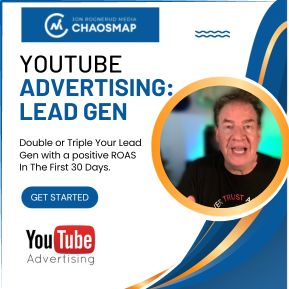They call it “omnishopping”: the tendency of consumers to increasingly turn to technology for purchases, while not discounting the value of brick-and-mortar storefronts.
Omnishopping is most pronounced among Generation Z shoppers, ages 18 to 26.

In fact, nearly half of all shoppers who make up this demographic have “webroomed” a product on a mobile device before buying it in a traditional storefront. Meantime, one-third have “showroomed” an in-store product and then purchased it online.
It may seem obvious, but both Gen Y and Z shoppers have a higher likelihood than any other demographic to showroom retail goods and products. For retail businesses, this means identifying ways to simultaneously attract consumers who enjoy the online and in-store buying experience.
Here are some ways to integrate your in-store and online marketing to attract omnichannel shoppers.
Use Online, Offline Tools to Capture Contact Information
To bridge your online and offline marketing, one of the most fundamental steps you can take is to capture customer contact information.
Your website or blog, social media platforms and point-of-sale marketing can all serve as opportunities to collect this important information.
E-commerce retailers tend to be more proactive about this, particularly because their marketing efforts revolve around capturing customers’ email addresses.
A blog serves as a great platform to not only deliver relevant and useful information to customers and prospects alike; it also allows you the opportunity to create forms so consumers can “opt-in” and, thus, help your business generate qualified leads.
It’s also important to leverage in-store opportunities to capture customer information.
But because shoppers tend to weary of sales pitches and don’t want their time wasted, they may be more willing to provide this information if you extend a discount offer at the point of sale.
However, emphasize that you will not share their information and that they can opt out at any time.
Use Geotargeting and Beacons to Attract In-store Customers
Geotargeting and geofencing are great ways to bridge the gap between online and in-store marketing.
Through geotargeting, you can run mobile promotions to residents in certain geographic area. Meantime, geofencing gives you the ability to target potential customers inside a digital perimeter, which can be defined by the boundaries of your storefront or an adjacent area.
Beacons work at short range using Bluetooth, so you can craft ads geared toward shoppers in your store or even in specific aisles.
Use these techniques to reach your customers on their mobile phones — whether they frequent your store or live in surrounding areas.
Make It Easy for Mobile Buyers to Pay
Making checkout easy for mobile buyers will boost both your online and in-store sales. You might want to consider offering PayPal on your website, as one-click checkout options tend to streamline sales.
To compete with the likes of Apple and Google, you might want to adopt mobile payments, a business strategy projected to grow by 75 percent in 2017.
For example, Walmart has developed its Scan & Go app that allows customers to link a credit or debit card to their smartphone.
Sales reps simply scan the customer’s smartphone to accept payment.
Provide Omnichannel Customer Service
If you want to effectively serve both online and in-store customers, it’s essential to extend customer service through an omni-channel experience.
The best way to achieve this is to adopt a cloud-contact center solution that let’s your customer service team handle these responsibilities from a single, integrated platform, including options sold by Aspect Zipwire.
Having a single interface for managing customer service via phone, live chat, email and social media will ensure your customers have a positive engagement experience, no matter which platform they use.
Jon Rognerud and Chaosmap work with Fortune 500 companies, associations and entrepreneurs to create digital traffic strategies that scale up members, customers, leads and sales with profitable returns. Mr. Rognerud wrote a best-selling book (Buy On Amazon), “The Ultimate Guide To Optimizing Your Website” (Entrepreneur). Connect directly here.







